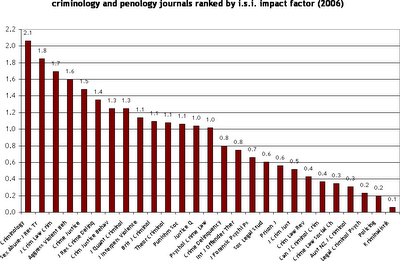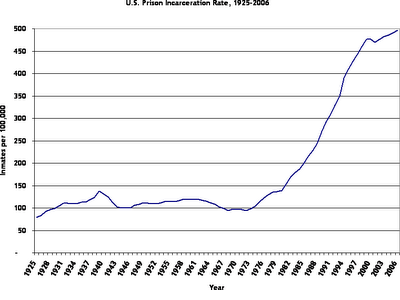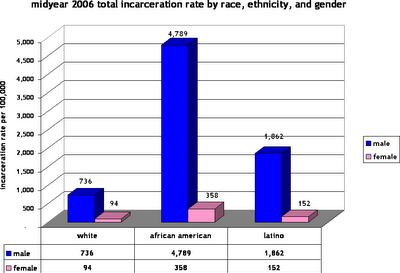 Job Title: Planning Analyst, Senior
Job Title: Planning Analyst, Senior
Closing Date: 7/19/07 5:00 PM
Salary: $41,976 – $63,900 annually
Job Type: Full-time
Location: Downtown Minneapolis
Department: Strategic Initiatives & Community Engagement
the ny times offered a strong op-ed on juvenile Justice this week. in my juvenile delinquency class, i discuss the 1974 juvenile Justice and delinquency prevention act, which should have removed juveniles from adult jails. unfortunately, the practice of housing kids in adult facilities has continued unabated, with predictable and disturbing results.
the ratings shift around from year to year, since a “hit” hundred-citation article in, say, policing would rocket that journal up the charts. this year, i’m a bit surprised by the high ranking of sexual abuse: a journal of research and treatment, but see few other surprises on the list. in my opinion, good articles appear in every one of these journals, though the top-ranked journals might be more consistent in publishing high-quality articles from stem to stern in every volume.
1. Citation Analysis
A high number of citations generally indicates a high level of quality. Cited reference searching enables you to find articles from journals that have cited a book, a patent or another article. Through a cited reference search, you can discover how a known idea or innovation has been confirmed, applied, improved, extended or corrected… Citation Analysis Debate
2. Impact Factor
Impact factor is based on the number of times that articles in a journal are cited in the two years following the year of publication…High impact factor or highly cited journals are considered more prestigious and important. JCR Fact Sheet Impact Factor Debate
3. Prestige and Reputation of the Journal
The prestige and reputation of the association, society, or organization publishing a journal can be a determining factor. Theoretically, the most prestigious scholarly associations such as APA, IEEE, etc. publish the best, most important, research in the field and therefore their journals have more prestige and weight than others…
…Few people have knowledge of, and familiarity with all scholarly journals in a discipline …However, among sub-disciplines, it becomes more possible to possess in-depth familiarity with the journals. If someone does truly possess this knowledge, their opinion, of which are the “best” journals in a discipline is worth a great deal in assessment.
5. Acceptance/Rejection Rate of the Journal
…Low acceptance rate, high rejection rate journals are considered the best and most prestigious journals. …Many journals and societies have web pages that give publication data and style requirements and often includes acceptance/rejection rates. The paper copy of the journal occasionally includes this data and will always provide current contact information. Periodical Guide
6. Indexing Services covering the Journal
Whether a journal is indexed in the major indexing/abstracting service in the field is another criteria that can be used to assess the worth and quality of a journal.
7. Total Circulation of the Journal
 zheng xiaoyu has been executed. the former head of china’s food and drug safety agency had been convicted of accepting bribes from pharmaceutical companies this may.
zheng xiaoyu has been executed. the former head of china’s food and drug safety agency had been convicted of accepting bribes from pharmaceutical companies this may.
leftist criminologists often rail against the light sentences given to white-collar criminals in the united states, particularly when measured against the lengthy prison time served by those convicted of street crimes. this sort of disproportionality case is most convincing with respect to drug convictions and property crimes. it doesn’t take a marxist to notice that poor people who steal $2,000 worth of property sometimes do longer (and harder) time than executives who steal $2,000,000 emptying a pension fund.
i suppose that a few criminologists will read zheng xiaoyu’s execution as evidence that an appropriate consideration of social harm has been given its due weight at sentencing. more cynically, of course, most of us will interpret this execution as signaling that scapegoats will be found and crucified whenever big-time market interests are threatened — in china, as elsewhere.
either way, i doubt that this execution will do much to purge the diethylene glycol from your counterfeit colgate or the melamine from your cat food.
 nate chapnick of edmunds.com offers a nice piece on surveillance systems and in-car cameras that allow parents to monitor their teen drivers. one firm will track your car’s sudden movements, record the data on a website, and assign your kid a “risk score.”
nate chapnick of edmunds.com offers a nice piece on surveillance systems and in-car cameras that allow parents to monitor their teen drivers. one firm will track your car’s sudden movements, record the data on a website, and assign your kid a “risk score.”
i once scoffed at such surveillance measures. then i thought about the two teenagers in my house hurtling down the road in three-thousand pounds of steel.
the data tell us that when teenagers die, they are likely to die behind the wheel. the centers for disease control report that “motor vehicle crashes are the leading cause of death for U.S. teens, accounting for 36% of all deaths in this age group” and that “the risk of motor vehicle crashes is higher among 16- to 19-year-olds than among any other age group …. per mile driven, teen drivers ages 16 to 19 are four times more likely than older drivers to crash.”
though i understand these risks, i’m too much of a small-l libertarian to monitor my kids electronically. i’ve decided to adopt a probable cause standard for implementing such surveillance. that means that i won’t hassle with such stuff unless and until i have information sufficient to warrant a prudent person’s belief that tor or esperanza had been delinquent or that evidence of delinquency or contraband would be found in a search.
but that doesn’t mean that i won’t take steps short of full-on surveillance, such as implementing curfews, based on a less-stringent reasonable suspicion standard. if i judge that a reasonable parent in my circumstances could reasonably believe that tor or esperanza has been, is, or is about to be, engaged in delinquent activity, i will strike down upon them with great rulemaking and furious anger. plus, i’ll take the keys.
come to think of it, my kids don’t really need to drive at all. if they broach the probable cause standard and behave so irresponsibly that i feel the need to purchase an in-car surveillance system, i’ll just hold the keys until they can afford to buy it for me. that’ll teach ’em.
 australia has a reputation for producing particularly nasty anti-speeding public service announcements. newsweek’s kendall hill reports on a new campaign with a lighter touch:
australia has a reputation for producing particularly nasty anti-speeding public service announcements. newsweek’s kendall hill reports on a new campaign with a lighter touch:
 via the sentencing project and talkleft:
via the sentencing project and talkleft:
aside from eliminating the disparity in crack/powder cocaine sentencing, however, the candidates were a bit light on concrete reforms. breaking news: not one candidate called for greater racial disparity in Justice or expansion of the death penalty for expired license plate tabs.
hmmm. what happened to the clinton/gore kill ’em all crime rhetoric of the nineties? is it getting just a little bit safer for democrats to be just a little bit softer on crime? i’ll be fascinated to hear the republican response.
in not-unrelated news, the times endorsed the second chance act today, to “provide grants, guidance and assistance to states and localities that are developing programs to reintegrate former inmates into their communities.”
i’m more concerned with rates than numbers, so my figure above standardizes by population to show the long-term trend in prison incarceration. the 2006 rate was 497 per 100,000 u.s. residents, or 750 per 100,000 counting jail inmates.
most people know that incarceration rates are highest for african american males, but it is sometimes tough to get one’s head around the magnitude of group differences in punishment. in 2006, about 4.8 percent of all african american men and about 11.7 percent of african american men in their twenties were incarcerated. as the figure below shows, the incarceration rate for african american men is currently fifty times higher than the incarceration rate for white women (4,789/94 = 50.9).
the disparities are much greater, of course, when age is thrown into the mix. the rate for african american men in their twenties is about 1,300 times higher than the incarceration rate for white women aged 55 and over. white guys my age have a rate of 1,419 per 100,000, which is significantly higher than any of the female rates (which top out at 999 for african american women in their late thirties), but significantly lower than the rates for latino or african american men in all but the oldest age group.
finally, there is great state-to-state variation, with louisiana (835 per 100,000 residents), texas (687), and oklahoma (658) leading the nation in punishment. the lowest incarceration rates were in maine (141 per 100,000 residents), minnesota (189) and rhode island (195).
 ever heard the term shoulder tapping? today’s strib describes a new minnversity study in which young-looking research assistants offered liquor store patrons money to buy them beer.
ever heard the term shoulder tapping? today’s strib describes a new minnversity study in which young-looking research assistants offered liquor store patrons money to buy them beer.
epidemiologist traci toomey finds that young males are significantly more likely to respond favorably to such requests: 19 percent agreed to purchase the beer, relative to about 8 percent in the general population.
this is an intriguing finding, i suppose, and consistent with the general tendency toward greater delinquency among young men relative to other demographic groups. the study used 4 female research assistants and 1 male RA, however, so i’m a bit concerned that chivalry or some sort of ican’tbelievethiscutegirlisactuallytalkingtome phenomenon might have something to do with the propensity of young dudes to violate the law and respond favorably to the request.
i can’t imagine a scenario in which i’d buy booze for minors, partly because i’m afraid they’d drink themselves to death (well, i did see a bit of this while attending college in madison) and partly because i’d assumed one would be severely punished for such an offense. in case you’d consider making such purchases for your undergrads, here’s the formal deterrent:
St. Paul police spokesman Tom Walsh said they have charged individuals with providing alcohol to a minor, a gross misdemeanor carrying up to a year in jail and a $1,000 fine, for buying in such circumstances.
if someone taps you on the shoulder, just say no.
photo by Richard Tsong-Taatarii , Star Tribune
 the bureau of Justice statistics just released a report with data from the first national census of medical examiners’ and coroners’ offices.
the bureau of Justice statistics just released a report with data from the first national census of medical examiners’ and coroners’ offices.
Cleveland OH 16.2%
Los Angeles CA 5.9%
Houston TX 3.0%
San Bernardino CA 2.3%



